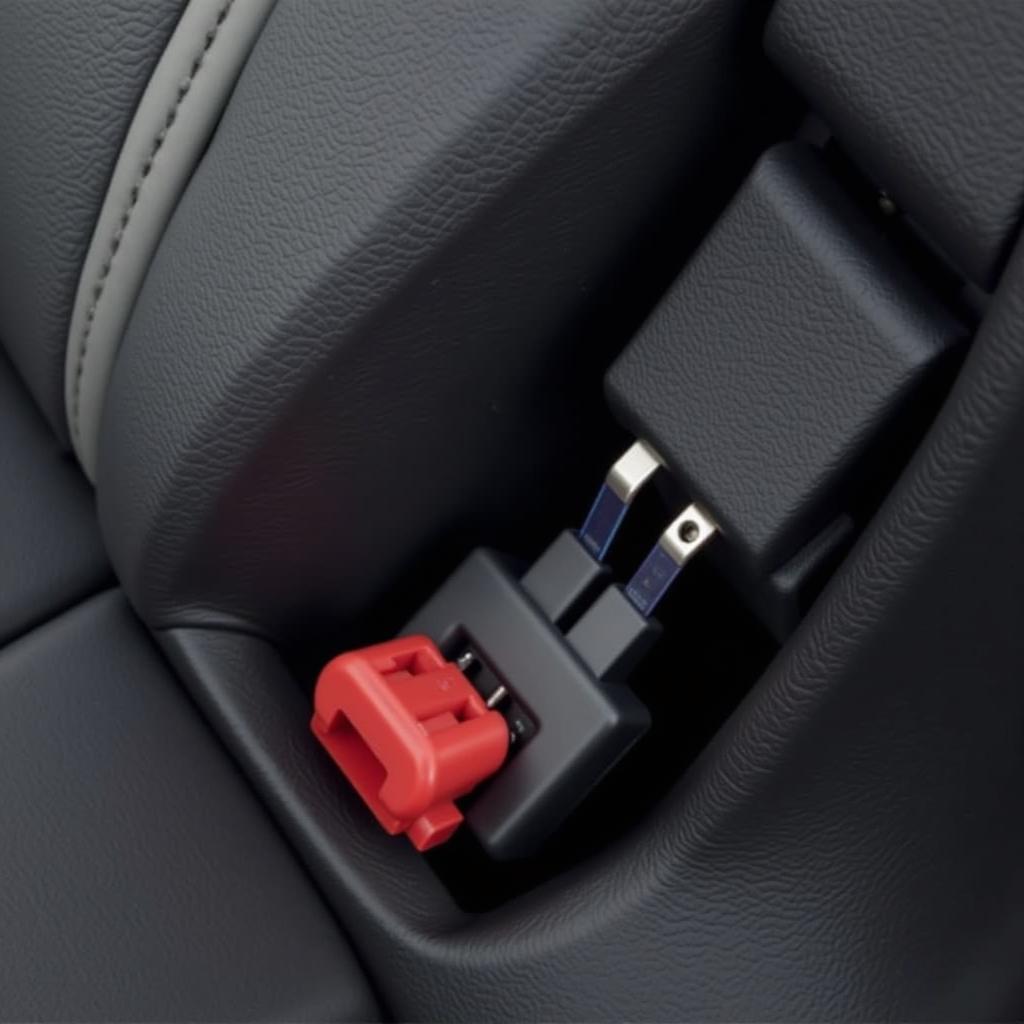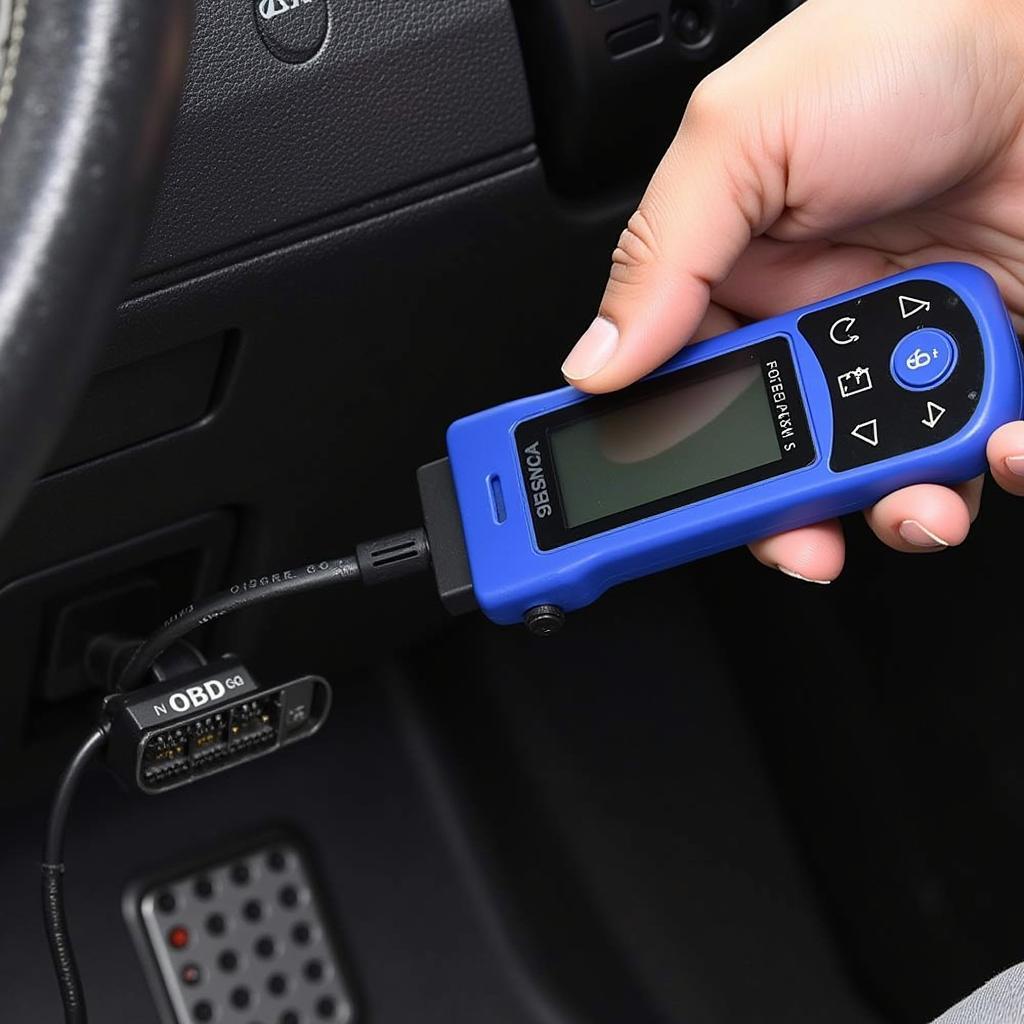The persistent beeping of a seat belt warning in your Polo can be a major distraction. Whether it’s a faulty sensor, wiring issue, or a simple oversight, understanding the cause is crucial for a quick fix. This guide dives deep into the common reasons behind the “Polo seat belt warning” and provides practical solutions to help you silence that annoying alarm for good.
Understanding the Seat Belt Warning System in Your Polo
Your Polo’s seat belt warning system is a crucial safety feature designed to remind you and your passengers to buckle up. It typically consists of:
- Seat Belt Buckle Sensors: These sensors, located in the buckle receptacles, detect when a seat belt is fastened.
- Weight Sensors (Occupancy Sensors): Some Polos are equipped with sensors in the seats that detect the presence of a passenger.
- Warning Light and Chime: When the system detects an unbuckled seat belt while the car is in motion, it triggers a visual warning on the dashboard and an audible chime.
Common Causes of a Polo Seat Belt Warning
1. Unfastened Seat Belt
This might seem obvious, but the most common cause is simply an unfastened seat belt. Before exploring complex issues, ensure all seat belts, including the driver’s, are properly clicked into their buckles.
2. Faulty Seat Belt Buckle Sensor
Over time, the sensors within the buckle receptacles can wear out or become damaged. A faulty sensor might not detect a fastened seat belt, leading to a continuous warning.
3. Wiring Problems
The wiring connecting the seat belt buckle sensors to the car’s electrical system can become loose, corroded, or damaged. This disruption in the electrical circuit can cause a false warning signal.
4. Malfunctioning Weight Sensor
If your Polo has weight sensors, a malfunctioning sensor might incorrectly indicate a passenger’s presence, triggering the warning even when the seat is empty.
 Close-up view of a Polo Seat Belt Buckle Sensor
Close-up view of a Polo Seat Belt Buckle Sensor
Troubleshooting the Polo Seat Belt Warning
1. Visual Inspection
- Check the Seat Belts: Carefully examine all seat belts for any signs of damage, fraying, or twisting. Ensure they are properly inserted into the buckles.
- Inspect the Buckle Sensors: Visually inspect the buckle receptacles for any visible damage, debris, or foreign objects that might be obstructing the sensors.
2. Testing the Warning System
- Start the Engine: Turn on the ignition and observe the dashboard warning lights. The seat belt warning light should illuminate briefly as a system check and then turn off if the seat belts are fastened.
- Test Each Seat: With the engine running, fasten and unfasten each seat belt individually. The warning light and chime should activate and deactivate accordingly.
3. Checking for Diagnostic Trouble Codes (DTCs)
Your Polo’s onboard computer stores diagnostic trouble codes that can provide valuable insights into the issue. You can access these codes using a compatible OBD (On-Board Diagnostics) scanner, which can be purchased online or at auto parts stores.
 An OBD scanner plugged into a Polo's OBD port
An OBD scanner plugged into a Polo's OBD port
“Using an OBD scanner to retrieve DTCs is like reading your car’s health report,” says automotive electronics specialist, Mark Stevenson. “It helps pinpoint the root cause of the problem, saving you time and potential misdiagnoses.”
Solutions for a Polo Seat Belt Warning
1. Simple Fixes
- Fasten Seat Belts: Ensure all seat belts are securely fastened.
- Clean the Buckle Sensors: Use a can of compressed air or a cotton swab to gently clean the buckle sensors.
- Check the Wiring Connections: Inspect the wiring connections to the seat belt buckle sensors for looseness or corrosion. Reconnect any loose wires and clean any corroded connections.
2. Replacement of Faulty Components
- Seat Belt Buckle Sensor: If a sensor is faulty, it needs to be replaced. You can purchase a replacement sensor online or from a dealership.
- Weight Sensor: A malfunctioning weight sensor requires professional diagnosis and replacement.
3. Software Update or Reset
In some cases, a software glitch can cause a false seat belt warning. A software update or reset performed by a dealership or a qualified mechanic might be necessary.
Preventing Future Polo Seat Belt Warning Issues
- Regular Maintenance: Schedule routine inspections of your car’s electrical system, including the seat belt warning system components.
- Avoid Spills and Moisture: Keep the area around the seat belt buckles clean and dry to prevent corrosion.
- Gentle Handling: Avoid yanking or pulling on the seat belts excessively, as this can damage the sensors and wiring.
Conclusion
Addressing a persistent seat belt warning in your Polo is essential for both safety and your sanity. By understanding the common causes and following the troubleshooting steps, you can often resolve the issue yourself. However, for complex problems, don’t hesitate to seek professional assistance from a qualified mechanic or your local dealership.
FAQ
1. Can I drive my Polo with a faulty seat belt warning system?
While it’s technically possible, driving with a faulty seat belt warning system is highly discouraged. This system is crucial for reminding you and your passengers to buckle up, which is vital for safety in case of an accident.
2. How much does it cost to replace a seat belt buckle sensor?
The cost of replacing a seat belt buckle sensor varies depending on your Polo’s model year and where you purchase the part. On average, you can expect to pay between $50 to $150 for the sensor itself. Labor costs for installation can range from $50 to $100.
3. Are aftermarket seat belt buckle sensors as reliable as OEM ones?
While aftermarket seat belt buckle sensors are generally more affordable, it’s recommended to use OEM (Original Equipment Manufacturer) parts whenever possible. OEM parts are designed specifically for your Polo’s make and model, ensuring optimal compatibility and reliability.
